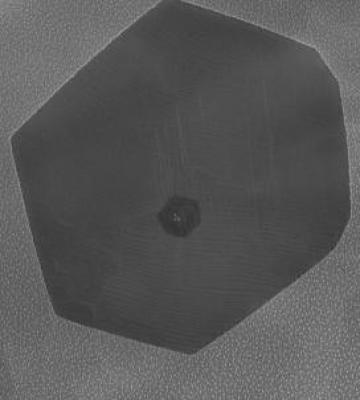Gilding is the process of coating intricate artifacts with precious metals. Ancient Egyptians and Chinese coated their sculptures with thin metal films using gildingâand these golden sculptures have resisted corrosion, wear, and environmental degradation for thousands of years.
 Microscope image of a graphene crystal on a palladium leaf
Microscope image of a graphene crystal on a palladium leaf
In a new study at the University of Illinois at Urbana-Champaign, Sameh Tawfick was inspired by this ancient process and used it with a twist - he added a layer of graphene on top of palladium metal leavesâdoubling the protective quality of gilding against wear and tear.
Adding one more layer of graphene atoms onto the palladium made it twice as resistant to indents than the bare leaves alone, said Tawfick. It’s also very attractive from a cost perspective. The amount of graphene needed to cover the gilded structures of the Carbide & Carbon Building in Chicago, for example, would be the size of the head of a pin.
Additionally, the team developed a new technology to grow high-quality graphene directly on the surface of 150 nanometer-thin palladium leavesâin just 30 seconds. Using a CVD process, in which the metal leaf is processed in a 1,100°C furnace, the bare palladium leaf acts as a catalyst, allowing the gases to react quickly.
"Chemical vapor deposition of graphene requires a very high temperature, which could melt the leaves or cause them to bead up by a process called solid state dewetting, said Kaihao Zhang, PhD candidate and lead author of the study. The process we developed deposits the graphene quickly enough to avoid high-temperature degradation, it’s scalable, and it produces graphene of very high quality.

